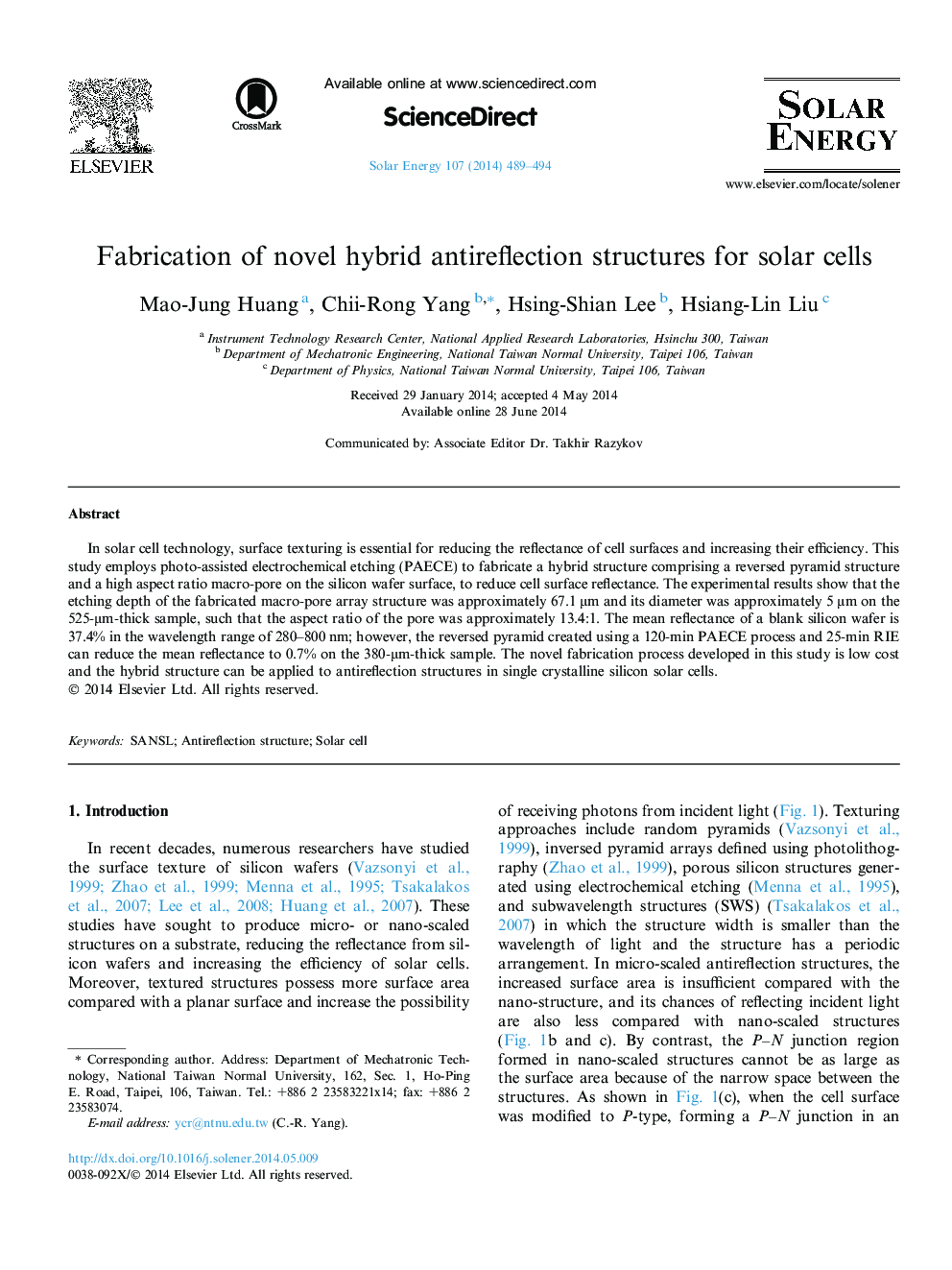| Article ID | Journal | Published Year | Pages | File Type |
|---|---|---|---|---|
| 1549956 | Solar Energy | 2014 | 6 Pages |
•The novel composite structure has advantages of low cost and simple process.•We achieved the novel structure in both 525 and 380-μm-thick silicon wafer.•All the structures have the mean reflectance of about 1%.•The lowest mean reflectance is only 0.7% in a wavelength range of 280–800 nm.•The P–N junction region area of this structure could be closed to surface area.
In solar cell technology, surface texturing is essential for reducing the reflectance of cell surfaces and increasing their efficiency. This study employs photo-assisted electrochemical etching (PAECE) to fabricate a hybrid structure comprising a reversed pyramid structure and a high aspect ratio macro-pore on the silicon wafer surface, to reduce cell surface reflectance. The experimental results show that the etching depth of the fabricated macro-pore array structure was approximately 67.1 μm and its diameter was approximately 5 μm on the 525-μm-thick sample, such that the aspect ratio of the pore was approximately 13.4:1. The mean reflectance of a blank silicon wafer is 37.4% in the wavelength range of 280–800 nm; however, the reversed pyramid created using a 120-min PAECE process and 25-min RIE can reduce the mean reflectance to 0.7% on the 380-μm-thick sample. The novel fabrication process developed in this study is low cost and the hybrid structure can be applied to antireflection structures in single crystalline silicon solar cells.
